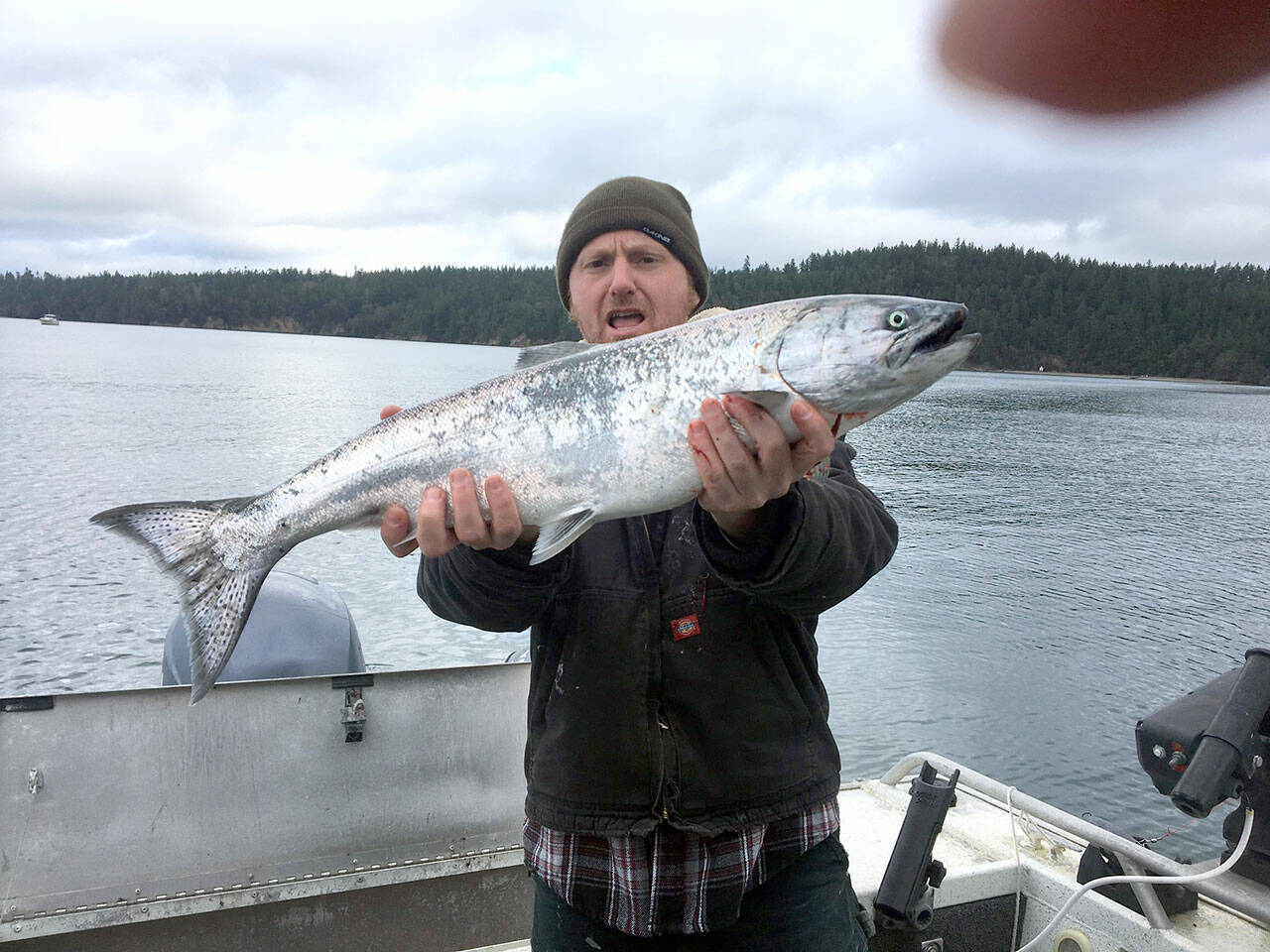BLACKMOUTH CHINOOK FISHING begins Wednesday off of Sekiu in Marine Area 5. The fishery is planned to continue through April 30 with a daily limit of two salmon, one of which may be a chinook, so long as it is a minimum of 22 inches in size. Coho and wild kings must be released.
Like the summer salmon season, winter/spring blackmouth are best targeted on tidal changes.
Ebb tide trolls from the Cave west of Mason’s Resort in water 100 to 150 feet deep with the gear 5-10 feet from the bottom is a good place to start this fishery. Troll further west to Eagle Point and see if you can find herring or candlefish feeds.
Flood tide
On a flood tide, set up shop around Slip Point east of Clallam Bay and troll east past Mussolini Rock following the same techniques as the ebb tide.
Silver Horde traditional spoons or a white hoochie will attract the blackmouth. Ace Hi-Flies also work. The old-school angler also can try the tried and true method of using a cut-plug herring.
Season setting starts
North of Falcon, the annual salmon season setting process, will begin Friday with a statewide forecast meeting held in Lacey.
More than a dozen in-person and virtual meetings are scheduled in the coming months to discuss salmon fisheries across Washington. North of Falcon refers to waters north of Oregon’s Cape Falcon, which marks the southern border of management of Washington’s salmon stocks, including Puget Sound, Strait of Juan de Fuca, Columbia River, and coastal areas.
The state Department of Fish and Wildlife will present initial salmon forecasts developed by the state and tribal co-manager fisheries biologists from 9 a.m. to 3 p.m. at the Lacey Community Center, 6729 Pacific Avenue S.E. in Lacey.
The main session of the March 3 meeting will be available to watch via Zoom at https://tinyurl.com/PDN-NOFZoom.
WDFW and tribal forecasters use a suite of scientific data, including watershed sampling and monitoring, ocean indicators and previous year returns, to estimate the number of salmon and steelhead that will return to Northwest waters, and how many fish will be available for harvest.
The public also can leave comments online at https://tinyurl.com/PDN-NOFComments.
During the final days of negotiations, state fish managers plan to hold briefings each day, which will be available via conference call.
Razor digs planned
A number of March razor clam dig dates are planned and awaiting final approval.
“After reopening harvest on Copalis and Mocrocks since late January, we are delighted to announce tentative digs at both beaches for the remainder of March,” said Bryce Blumenthal, coastal shellfish biologist.
“Marine toxin levels on Long Beach and Twin Harbors are still too high for reopening, but we’re hopeful that digging will return to one or both of those beaches before April.”
The following tentative digs during evening (p.m.) low tides are scheduled:
• Friday: 4:31 p.m.; 0.6 feet; Mocrocks.
• March 4: 5:09 p.m.; 0.4 feet; Copalis.
• March 5: 5:42 p.m.; 0.2 feet; Mocrocks.
• March 6: 6:13 p.m. 0.1 feet; Copalis.
• March 7: 6:41 p.m.; 0.3 feet; Mocrocks.
• March 8: 7:09 p.m.; 0.5 feet; Copalis.
________
Sports reporter Michael Carman can be contacted at mcarman@peninsuladailynews.com.

